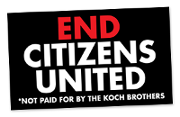Biblio
Filters: First Letter Of Last Name is M [Clear All Filters]
(2002). XSLT Cookbook.
(2001). Business Is Combat: A Fighter Pilot's Guide to Winning in Modern Business Warfare.
"This book began with people and it ends with people, because ultimately they are an organization's greatest asset. It is individuals who innovate, not companies. It is individuals who persist against all odds, not corporate guidelines or a time clock."
(2001). Driving Digital: Microsoft and Its Customers Speak About Thriving in the E-Business Era.
"If you think about the traditional corporate structure, what determines who's going to be a part of the debate? Simple: the people who are allowed in the meeting room." (p. 78)
"Two issues: Can your senior executive group adjust to a culture in which folks at the most junior levels of the organization have access to all but the most highly sensitive information about the company? And can they adjust to a culture in which they will receive e-mails from those same junior level folks? Will they be open and responsive to those e-mails? Are the managers at levels between the junior sender and senior executive who receives the e-mail going to revolt at not being consulted before the message gets sent, probably not even cc'ed?" (p. 84)
"Two issues: Can your senior executive group adjust to a culture in which folks at the most junior levels of the organization have access to all but the most highly sensitive information about the company? And can they adjust to a culture in which they will receive e-mails from those same junior level folks? Will they be open and responsive to those e-mails? Are the managers at levels between the junior sender and senior executive who receives the e-mail going to revolt at not being consulted before the message gets sent, probably not even cc'ed?" (p. 84)
(2001). Never Wrestle with a Pig: and ninety other ideas to build your business and career.
"I've always taken some comfort in the belief that the stronger an idea is, the harder it is to steal.
That's because the best ideas, by definition, are so original and unique that they cannot survive without their creator. He or she is the only one who understands the concept fully, who can execute it up to its full potential, and who has a personal stake in keeping the concept going despite all the obstacles." (p. 92)
That's because the best ideas, by definition, are so original and unique that they cannot survive without their creator. He or she is the only one who understands the concept fully, who can execute it up to its full potential, and who has a personal stake in keeping the concept going despite all the obstacles." (p. 92)
(2001). Power talk: using language to build authority and influence.
"Surprisingly, authority can also he established by humor. The speaker who can make light of a topic demonstrates comfort in the circumstances and familiarity with the issues. The humor of the stand-up comic or the joke-of-the-week belong on late-night TV. But researchers like Robert R. Provine, professor of neurobiology and psychology at the University of Maryland, Baltimore County, who study laughter and humor in common conversation, see laughter as 'social glue,' rather than a response to something inherently funny. Laughter binds speaker and listener. Most of the time, no one is telling jokes. But within the course of a conversation, tension is reduced and connections are made with humor. This is why when the boss laughs, everybody laughs."
(2001). DB2 Universal Database v7.1.
(2001). XML by Example (2nd Edition).
(2000). Patient number one: a true story of how one CEO took on cancer and big business in the fight of his life.
328. Abstract
"There is always an uneasy truce between scientists and salesmen. Scientists want their product to be absolutely perfect before allowing it to be sold; salesmen want to get it out the door where it can start generating income as soon as possible. On occasion the truce is broken, usually over budgetary and resource issues." (p. 78)
(2000). Applications in Human Resource Management: Cases, Exercises, and Skill Building.
"This article (in Business Week) identified a number of family-oriented policies and programs followed by 24 leading companies. Among the most significant of these were modifications in the company culture, executive development to enhance 'sensitivity', child care, sick care, women on the board, career development policies, family-leave policies, maternity leave with partial pay, modified work and family benefits, flexible benefits, hiring a 'pluralistic' workforce, job sharing, mentoring programs, and part-time professional and/or executive positions...
In response to employee criticism and the potential for negative publicity, the board of trustees made a decision to establish a 'Task Force on the Work / Family Interface.'" (p. 87)
In response to employee criticism and the potential for negative publicity, the board of trustees made a decision to establish a 'Task Force on the Work / Family Interface.'" (p. 87)
(2000). Failing Forward: Turning Mistakes into Stepping Stones for Success.
"Why are people so hesitant to change? I believe that some, like Audubon, believe they are supposed to pursue a particular course of action for some reason—even though it doesn't suit their gifts and talents. And when they are not working in areas of strength, they do poorly." (p. 91)
(2000). Life Strategies : Doing What Works, Doing What Matters.
"Remember, I said earlier the number-one need in all people is acceptance. The number-one fear in all people is rejection." (p. 100)
(2000). Oracle8i for Dummies.
(2000). Special Edition: Using Samba.
(1999). If work makes people with mental illness sick, what do unemployment, poverty, and social isolation cause?.
Psychiatric Rehabilitation Journal. 23(2), Abstract
"In fact, the change from the role of patient or client to a new role as worker in society is fragile at best. The journey to employment requires a more sensitive approach from all involved individuals (the worker, the professionals, family, and friends) to the extent that everyone can successfully leverage the potential and ability of the worker with an appreciation of the limitations that are part of the illness."
(1999). The Overload Syndrome: Learning to Live Within Your Limits.
"The recent book Finding Time: How Corporations, Individuals, and Families Can Benefit from New Work Practices describes work stress among software engineers, thus highlighting issues important throughout many occupations. 'Knowledge workers, like senior executives, experience immense pressure to . . . put work above all else,' observes University of Michigan business professor Leslie A. Perlow, who studied a Fortune 500 company to write the book. 'Engineers believe that they must be perceived as always willing to "accommodate the demands of the work." . . .They should be willing to do whatever is asked, not just in terms of producing output but also in terms of working whatever hours are deemed necessary to get the job done.' As long as nobody's getting hurt, what's the big deal? The big deal is—somebody's getting hurt." (p. 179)
(1999). Enterprise JavaBeans.
(C)2014 CC-BY-NC 3.0, workcreatively.org











 ]
]